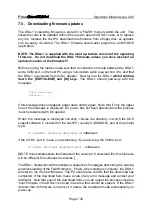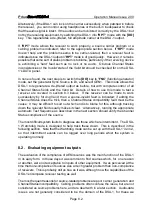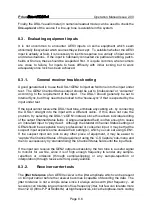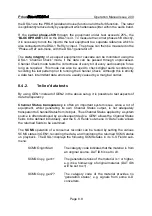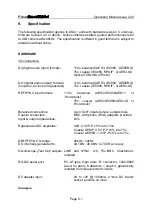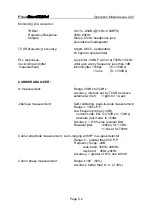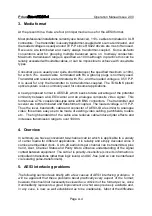
Prism
Operation Manual Issue 2.00
Page 8.12
This has resulted in different AES3 cable types and synchronisation schemes being
associated with sound quality. The cable types and the interface standard itself are
blamed for degradation rather than the inadequate converters. Clearly, within the
converter, this is a problem of jitter attenuation, like that already discussed for in-line
digital equipment. However, the design requirement is a much more stringent one
since jitter amplitudes which can produce identifiable sampling distortion are orders of
magnitude lower than those which would cause loss of data on the interface.
Some other common misconceptions have arisen from this confusion between interface
jitter and sampling jitter; for example there have been moves within consumer circles
for the jitter limit on the interface to be reduced to a level where it would not cause
appreciable sampling distortion if unattenuated in converters. This is simply not
possible for any appreciable transmission distance with a realisable cable and drive
electronics - nor is it necessary. Others have taken to inferring the performance of
conversion equipment which has both digital inputs and outputs by measuring the jitter
on the digital output and assuming it to be the same as in the converter subsystem,
which it probably is not. Perversely, it is probably impossible to measure jitter in the
time-domain anywhere near as accurately as can be done by applying it to a
conversion sub-system converting a known audio signal and measuring the distortion
products.
The DSA-1 can be useful in testing the susceptibility of converters to interface jitter,
since it can simultaneously generate audio and jitter waveforms which are useful for
this purpose. It cannot, however, assess resulting audio distortion and a conventional
analogue or digital audio generator/analyser is necessary for this.
To test the jitter susceptibility of a D/A converter, the DSA-1's GEN2 is connected to the
converter input with the fs/4 audio function selected. Jitter is then applied using the
fs/8 jitter function. An FFT analysis of the converter output is shown below for a non-
attenuating D/A converter and for a Prism Sound DA-1, which has extreme jitter
attenuation, each with 40ns P-P jitter amplitude (the nominally allowed value in the
interface standard):


